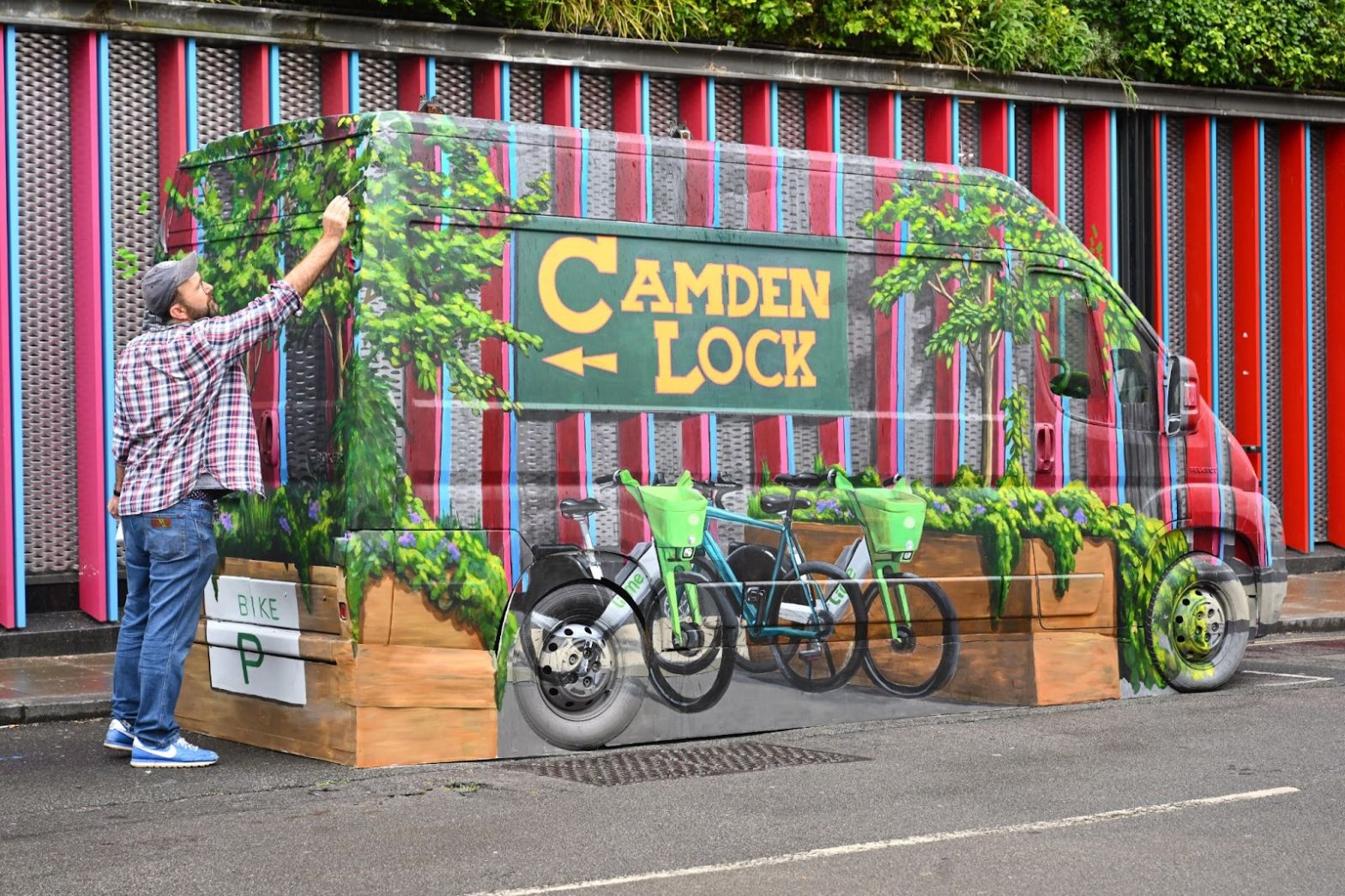
Photo: Lime
London councils urged to reallocate parking space for e-bikes
07 June 2024
by Christopher Carey
Micromobility operator Lime has called on London’s borough councils to reallocate car parking spaces for shared e-bikes, saying more than 30,000 shared bike trips are being missed every day.
A new report commissioned by the firm has recommended the creation of mandatory and flexible parking zones across the city and more consistent policies from borough councils.
Speaking to Cities Today, Lime’s Director of Policy for UK and Ireland Hal Stevenson said that in some boroughs the level of demand for parking has increased “astronomically” over the past 2-3 years.
“The main issue is that the demand for [shared] bikes has outstripped the available provision of parking, and councils have a very difficult job managing public space.
“There’s lots of different uses for kerbside space across different London boroughs and it’s hard to get permission and political traction to convert some of those spaces to [shared] bikes.
“At the moment, progress has been too slow to catch up with the level of demand and we want to work with councils to improve that. We’re doing that by sharing data so you can see where trips are starting and ending and where there’s a need for more bike parking.”
The report, authored by transport consultancy Steer with input from the Centre for London, identified the potential for the creation of more than 750 new e-bike parking locations across 11 London boroughs.
This included 163 new locations currently reserved for cars on carriageways or other open spaces that could fit 1,916 shared e-bikes.
In the last six months Lime has recorded a 21 percent increase in parking locations with “exceeded vehicle capacity” in central London on weekdays, which prompted the company to increase its on-street staffing by 40 percent.
Currently, the rules on where the vehicles can be left vary depending on the borough and the brand of e-bike being used.
Funding
“We’re also providing funding, and announced a £1 million (US$1.27 million) parking fund to be distributed amongst boroughs to build more parking infrastructure, whether that’s new carriageway bays, new pavement bays, or new bike racks on pavements or carriageways,” added Stevenson.
“We want to distribute that funding because we know that councils have a tough time from a budget perspective, and we want to reinvest in our service and make sure that we’re working with our partner borrowers to deliver the level of infrastructure that is required.”
In analysing the challenges facing parking, four areas were identified in the report – inconsistent parking rules, insufficient parking bay density which limits usage, insufficient bay capacity which leads to poorly parked bikes, and street clutter caused by bikes parking in busy locations.
Suggestions to alleviate these problems included the creation of a single mandatory parking zone for central boroughs, and a single flexible parking zone for outer boroughs.

“E-bikes and similar micromobility vehicles are an essential part of the tapestry that is London’s sustainable transport, said Antonia Jennings, CEO at Centre for London.
“However, as our recent research into street clutter discovered, mis-parked micromobility vehicles can have a detrimental effect on pavement users – creating hazards for wheelchair users and those with visual impairments.”
The issue has prompted London Mayor Sadiq Khan, who chairs Transport for London, to call on councils to use designated parking bays, which would be implemented by late 2025 or early 2026, according to The Sunday Times.
The scheme will go ahead if at least 20 boroughs sign up, but Lime has dubbed the proposals “very concerning”, saying while fixed parking bays make sense in central boroughs, flexible parking should be allowed in the suburbs.
Image: Lime







